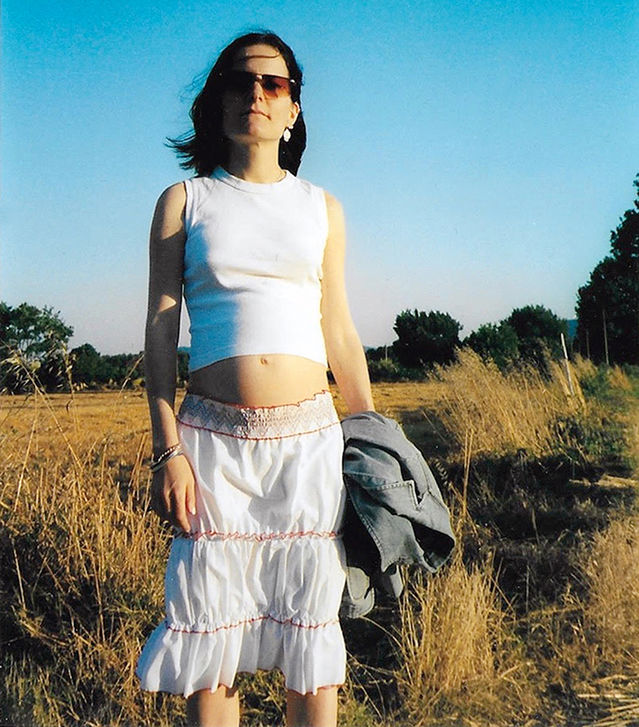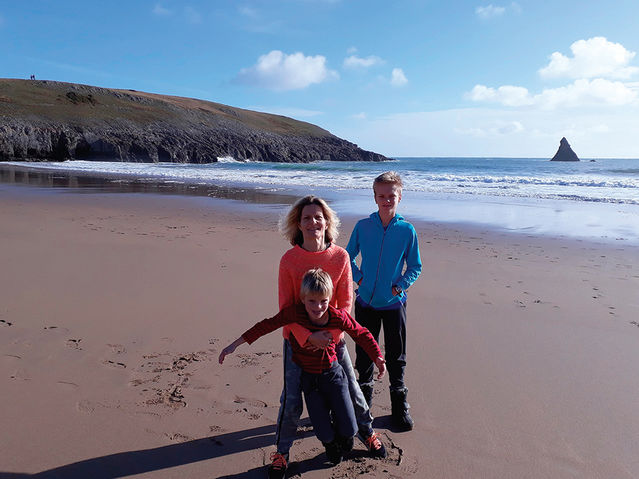Lives Unlived
Miscarriage can evoke a sense of grief long silenced by society.
By Julia Bueno M.A. published August 16, 2019 - last reviewed on September 22, 2019

I treasure my luck at finding love at the tender age of 18. I met David on my first day of college and realized right then that he would be my partner for life. A decade later, with his career established in journalism and mine in law, we sealed our bond by getting married. As we planned the wedding, I found myself caring less about the details of the event and more about my burgeoning desire to have a baby.
I wasn’t one of the lucky ones who conceived with ease. I had potential fertility problems: a strange-shaped womb and only one functioning fallopian tube. So, becoming pregnant was heaven sent. Being pregnant with twins was less so—with my wonky womb and five-foot frame, the risk of complications was high from the start.
Despite frequent complications, my two tiny babies continued to grow. I would drift into reveries of how I would guide a teenage son to be a feminist or encourage a daughter to embrace physical adventures in a way that I never had. It didn’t stop there—I even imagined becoming a doting grandmother to my grown children’s children. My mother began to collect tiny baby clothes, while David and I sketched out child-care arrangements and played around with possible names.
David and I flew to a friend’s wedding in Italy, and I danced until the early hours in a dress that I bought two sizes too big for me. Friends felt my belly for little punches and kicks, and some commented on the wisdom of my sipping champagne and eating prawns.
Not long after arriving home, I noticed a plug of mucus in the toilet after a pee, an ominous sign that suggested labor was beginning too soon. My doctor confirmed the need for an urgent “rescue stitch” to be put in my cervix, the neck of the womb that should remain closed. That night in surgery he did his best to keep my babies safe, and I was discharged the next day with the take-home message to cross my fingers.
The babies had a bare whisper of a chance of survival at 20 weeks, when the stitch was inserted. Ideally, labor wouldn’t begin until 37 weeks, but around 22 weeks the first pang of pain hit me so hard there was no mistaking what process had begun. I woke David in the early hours of a hot summer night with the words we’d both been dreading: “I’m in labor.”
Frantic to get to the hospital as quickly as we could, David drove while I vomited through contractions and saw flashes of white in front of my eyes. It quickly became apparent that my womb wouldn’t stop what it had been programmed to do, even though my babies would be too young to survive. I begged the doctor for a C-section, with a general anaesthetic, as I couldn’t bear to participate in the task of birthing two deaths. He stated that he couldn’t operate without a risk of tearing my womb, which could endanger future births.
Hours passed before my first baby, Florence, was born. Hours more passed while I drifted in and out of sleep. It was the following day when Matilda emerged, with pushing on my part, David by my side. I couldn’t bear to think about what had just happened.

Our babies were taken away. I’ll never know where as they weren’t returned to me and I refused to see them: I was too shocked, too exhausted, and too much in denial. Had I been given more time and reassurance that they looked as beautiful as I was later told, I am sure I would have changed my mind, thereby avoiding the guilt I still hold.
I washed the births away in a bath while I listened to a laboring woman shout through her pain and an infant wail new life into its family tree. I felt a trace of kinship with the former and flinched at the latter. I dressed in the clothes I’d arrived in, stained with amniotic fluid and sweat, and David and I signed the consent form for my unseen babies to be cremated. I then stepped out into the world as a woman who had had a miscarriage.
One in four pregnancies ends in miscarriage. Yet despite its prevalence, the world was largely ill-equipped to understand what I had been through—both the physical toll it took for me to part ways with my children-to-be and the staggering weight of grief that their loss unleashed. My babies had left my body, along with the dreams, hopes, and plans that had long nestled in my mind. I was riddled with anger, bitterness, and envy, and my self-esteem plummeted.
One friend texted something along the lines of “onwards and upwards.” Another joyfully marvelled at how quickly my swollen girth had disappeared. Others said nothing at all. It’s not that these people are mean or uncaring. Some were friends in the grip of an outdated, unchallenged cultural rule to not mention miscarriage. Maybe some were squeamish and wanted to avoid the thought of blood, pain, and embryonic bodies. I know that some thought it best not to upset my splintered state by talking about the m word.
But there were others who genuinely wondered, out of ignorance rather than malice, what all the fuss was about: After all, I hadn’t lost a child who had lived and breathed on earth. Confusion prevails when an experience is so immersed in ambiguity and riddled with paradox. Miscarriage tussles with “sort ofs” and “almosts” and “if onlys,” teetering in between life and death, parenthood and childlessness, mental and physical health. It seemed strenuous for people to accept the enormity of both the real and potential loss a miscarriage can bring.
Very few people around me took the time to find out the details of what had happened before, during, and after my miscarriage. I felt desperately, painfully alone. I also felt an overwhelming pressure to move on: I’d had a dose of bad luck, but the best thing to do was to get pregnant again. My doctor suggested so, and many friends and family members sought their own, and my, comfort in guiding my future without looking behind. I caved to the pressure and began trying again to conceive.
My first son was born three months too early. While his prematurity brought with it many complex health problems, David and I pulled together tightly in the delight and privilege of parenting our much-loved living child. After three more painful miscarriages (at 6 weeks, 12 weeks, and 16 weeks) I knew that I had the emotional strength for only one more pregnancy—and my second son was carried to term and born in full health. Our losses continued to teach us both what a privilege our family is. They also informed my career transition into psychotherapy, specializing in pregnancy loss.
Before I left the hospital after my first miscarriage, a midwife pressed my twins’ four tiny feet into a sponge steeped in pink ink and then transferred their footprints onto separate white cards. The prints remain the most important legacy of their beings that I have, my only tangible link left to the flesh that I had seen on screens and felt move inside of me for many weeks.
For a decade, the framed footprints sat beside me as I slept and were directly in the line of the sun that streamed through my window on spring and summer mornings. Very slowly, imperceptibly at first, the sunshine bleached the footprints away. I watched it happen. Year after year, my only link to my babies’ soles and 20 teeny toes disappeared before my eyes, yet I was seemingly unable to move the frame. I was frozen—again—by pain, denial, and not knowing, just as I had been at the time of their births.
The footprints were barely visible when a friend called me in great distress after the miscarriage of her second baby. She needed to talk, and during a conversation over lunch, we spoke about how she was going to explain what had happened to her 5-year-old daughter, as well as how she was determined to mark the death of her second child-to-be and keep her memory alive.
That conversation touched a nerve, even though it was far from a new topic for me. She made me realize that I hadn’t been completely honest with myself. I have campaigned for people to talk more openly about miscarriage and unhush the experience for the sake of those who suffer. But while doing so, I had kept my only real link to my babies hidden—and then almost vanished them away. My friend inspired me to take action, and she was able to help me in a practical way, too.
A photographer by profession, she introduced me to a colleague who, with digital wizardry, restored the footprints to their original pink and exquisitely detailed state. I could see again how Florence’s left foot was pushed down too hard, so its arch can’t be discerned, and was reminded of my regret at the decision not to hold it—or the other three feet, legs, arms, and bodies. I bought a bigger, bolder frame to put the image in and hung it at the head of my kitchen table, well away from the bleaching effect of the sun.
